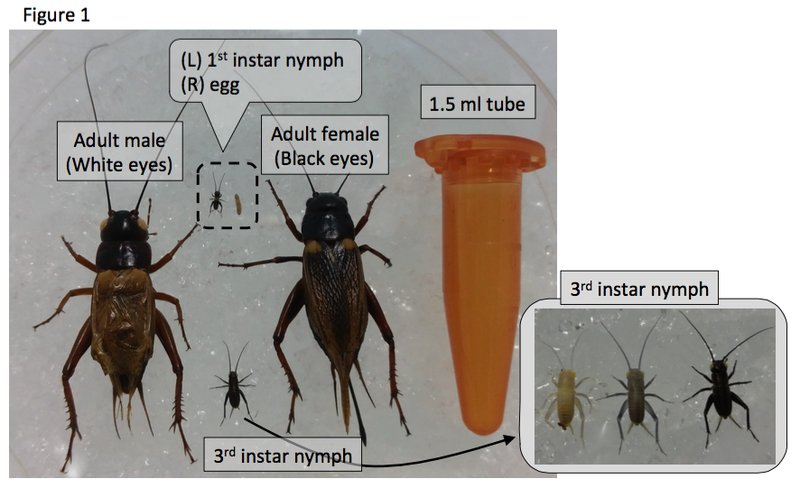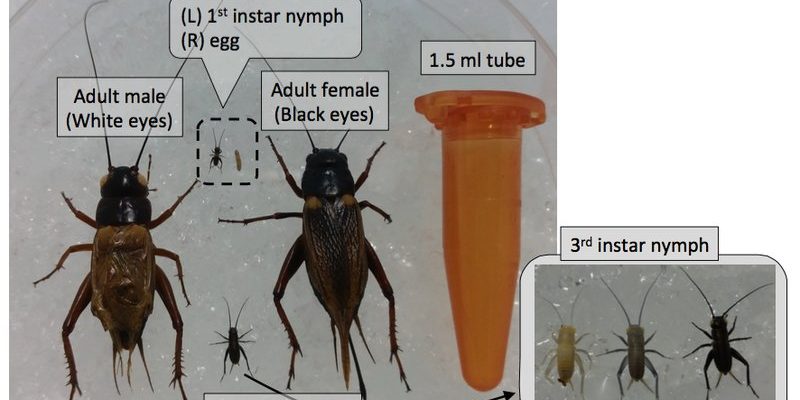
Crickets belong to the family Gryllidae and are known for their distinctive sounds. They play an essential role in our ecosystem, acting as both predators and prey. Just like watching a seed blossom into a flower, observing a cricket’s development offers incredible insights into nature’s cycle. Let’s dive into the lifecycle of a cricket, from its egg stage to becoming a fully grown adult, and explore each step along the way.
Understanding the Cricket Egg Stage
The lifecycle of a cricket begins with the egg stage, which is crucial for its development. Female crickets lay their eggs in the soil or under various organic materials, like leaves or rotting wood. This provides some shelter and protection from predators. Depending on the species, a female cricket can lay anywhere from 50 to 400 eggs!
After laying eggs, the mother cricket typically covers them with soil or plant debris to keep them safe. The eggs are small, usually white or light-colored, and cylindrical in shape. You might be wondering, how long does it take for these eggs to hatch? Well, it varies, but generally, it takes about 1 to 2 weeks for the eggs to develop into nymphs, depending on the temperature and humidity of their environment. Warmer conditions can speed up the process!
As the eggs mature, they undergo a transformation inside until they’re ready to burst open. It’s almost like a surprise party waiting to happen—tiny crickets waiting to take their first jump into the world!
From Nymph to Adult: The Nymph Stage
Once the eggs hatch, out come the nymphs. These little crickets look like miniature versions of adults, but they lack wings and reproductive organs. Nymphs are often lighter in color and about the size of a pinhead. This stage is all about growing and developing those essential features.
Nymphs go through a series of molts—this means they shed their exoskeletons to grow larger. Typically, a nymph will molt anywhere from 5 to 7 times over a period of 4 to 8 weeks. Each time they molt, they become larger and develop more adult-like features, such as wings. You might think of it like a toddler growing up and getting access to more exciting things as they age!
During the nymph stage, crickets are voracious eaters. They munch on a variety of materials, including leaves, decaying plants, and sometimes even other insects. This diet supports their growth and prepares them for the next stage of their lives.
Embracing the Adult Stage
Once nymphs finish their molting process, they finally become adults. A fully grown cricket typically measures between 0.5 to 2 inches long, depending on the species. Adult crickets have fully developed wings, which they use for mating and communication. Here’s the thing: it’s during this stage that they start to become the insects we’re familiar with—those chirping sounds we hear at night!
Adult crickets are fascinating creatures. They can live for several months and are most active during warmer weather. Their chirping is not just a noise; it’s a form of communication between males and females. Each species has its own distinctive song, which can help attract mates or establish territory. Have you ever tried figuring out how to tell different cricket songs apart? It’s a fun challenge!
As adults, crickets also play a role in the ecosystem. They serve as food for various animals, including birds, frogs, and even some mammals. Their life cycle contributes to the balance of our environment, showcasing the interconnectedness of all living things.
Factors Influencing Cricket Development
You might be surprised to learn that several factors influence how quickly crickets develop through their life stages. One major factor is environmental temperature. Crickets thrive in warm conditions, so if temperatures are higher, they often grow and mature faster. This is why you’ll usually find more crickets hopping around in late spring and summer.
Another important element is humidity. Crickets need moisture to survive and breed successfully. Too much or too little humidity can affect their growth and survival rates. If you’ve ever noticed fewer crickets after a dry spell, this could be why!
Food availability also plays a critical role. Crickets that have access to a rich diet grow faster and healthier than those that don’t. By providing a balanced diet of greens and fruits, crickets can achieve their full potential during the nymph stage and become robust adults.
The Role of Crickets in Ecosystems
Understanding the lifecycle of a cricket goes hand-in-hand with appreciating their role in the ecosystem. Crickets are not just passerby insects; they hold significant ecological value. They help break down organic matter, contributing to nutrient cycling in the soil.
As prey, adult crickets provide sustenance for a variety of animals. This makes them an essential part of the food web. So, when you hear that chirping in your backyard at night, remember: it’s not just a sound; it’s a song of survival and connectivity.
Moreover, crickets are utilized in research and agriculture. They are often studied to learn about insect behavior or used as organic pest control, reducing the need for synthetic pesticides. Plus, their protein-rich content has made them a sustainable food source in various cultures. Who knew crickets could be so versatile?
Fascinating Facts About Crickets
Crickets have some truly interesting traits that might surprise you. Here are a few fun tidbits to chew on:
- Chirping: Males produce their signature chirping sound by rubbing their wings together in a process called stridulation. This is how they attract mates.
- Life Span: The lifespan of a cricket can vary widely, but many can live up to 3 months as adults, depending on the conditions.
- Color Changes: Crickets might change color as they grow. Some species develop a darker hue as they mature, potentially to better blend in with their surroundings.
- Communication: Besides chirping, crickets also communicate through body language and vibrations, making them quite interactive insects!
Next time you hear a cricket chirping, remember that it’s not just an insect; it’s a part of a fascinating lifecycle that contributes significantly to the world around us.
The lifecycle of a cricket—from egg to adult—is a remarkable journey full of transformation and survival. Each stage, whether it’s the tiny egg, the hungry nymph, or the chirping adult, plays a vital role in the ecosystem. Crickets exemplify how interconnected life can be, contributing in ways we might take for granted.
So, the next time you see a cricket hopping around your yard or hear its evening serenade, take a moment to appreciate all the hard work that went into getting it there. These little creatures, with their complex lives, truly inspire us to look closer at the world around us and recognize the beauty in every stage of life.

